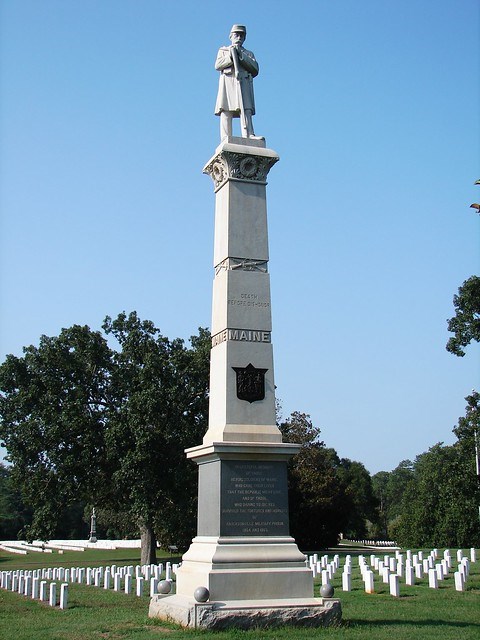
NPS Volunteer Hugh Peacock "The soldier well faced a cannon's mouth in time of battle is called a hero. Then why should not a soldier who faces death as those did who lay around us here in these thousands of graves be called heroes?"
- Commissioner Colonel Levi M. Poor Colonel Levi M. Poor spoke from the heart when he addressed the Maine legislature in 1903, requesting a bill be passed to provide funds to erect a memorial at Andersonville Prison Park. Poor served during the war in the Nineteenth Maine Regiment and was captured and held prisoner at Andersonville. After the war, the colonel watched as the state honored the men who fought on the battlefields with beautiful and dignified monuments. Maine did not forget those who died in battle. That story would be told for all ages. Poor, recalling the indignity and deaths at Andersonville, believed that the prisoners should not be forgotten. It was important to tell their stories for future generations just like those on the battlefields. The colonel approached an old schoolmate, veteran and state senator L.C. Morse, about introducing a bill to the state legislature to erect a monument. Morse gladly agreed, and in 1903 the introduced the bill while presenting it to the committee on military affairs, "every eye dimmed with tears." The resolution passed with no opposition. The state of Maine appropriated $5,000 for a monument at Andersonville to "perpetuate the memory of our patriotic Maine soldiers who gave their lives while confined as a prisoner of war"
The following month, the governor appointed a committee to carry out the bill. Serving as the chair, Governor John Fremont Hill appointed two former prisoners of war to serve on the committee. Because L.C. Morse introduced the legislation and was also a veteran, the governor appointed him to the group; he also appointed Levi M. Poor, who had served ten months at the prison. Realizing that his duties as governor would conflict with the commission work, Hill appointed S.J. Walton to serve in his place. After the first meeting, the men discovered that the prison grounds were stark, and very little remained of the actual prison. The stockade wall no longer stood, and Poor disliked the prison site. He described it as being "a desolate place, practically in the forest with the exception of a cleared land." The commission visited the national cemetery and found that the stone fence and government management provided them reassurance that their monument would be well maintained through the years. On returning to Maine, the commissioners began soliciting design proposals. The three men noticed during their visit to the site that other state monuments were dedicated to those who died. The commissioners agreed that the Maine monument would be dedicated to all Maine soldiers, including those who survived, and they agreed on a design by C.E. Tayntor and Company from Hollowell, Maine. The selected memorial would be made from Maine granite and feature a thirty-six-foot shaft with an eight-foot, nine-inch soldier on the top. The soldier would have his weapon in rest on arms. More importantly, the soldiers head would be bowed in sorrow and respect over the rifle. From a History of Andersonville Prison Monuments. By Stacy W. Reaves |
Last updated: September 12, 2022
